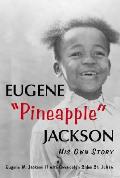Integrating Our Gang’s Schools
The Hal Roach Studio’s Our Gang series was notable from the beginning in showing black and white kids playing together on a mostly equal basis.
However, they didn’t go to school with each other—not for years.
Many American school systems were segregated in the early 1920s, either by law or (as in Los Angeles) by a combination of real-estate covenants and administrative moves that shuttled most black, Mexican, and Asian kids into certain schools.
At first the Hal Roach Studio’s school for its young actors replicated that situation, though it’s not clear if that was ever a goal. Ernie Morrison had been under contract for years when the series started, and he had a private tutor. Judging by photos like the one above from 1923, that tutor was a black woman.
In September 1922, having become responsible for educating more kids, Hal Roach hired Fern Carter (1893–1961) to run a school within the studio. She’s the woman standing in this publicity photo next to director Robert McGowan. She remained the teacher for the series’ main cast for more than twenty years.
Ernie Morrison continued to study with his tutor, however. It’s possible that race had no bearing on that arrangement. He and his father might have preferred that individual attention. It’s also quite conceivable that race was a factor. The Morrisons might have wanted to preserve that woman’s job, for instance, while the studio or other kids’ parents couldn’t imagine hiring her to teach the whole group. Or segregated schooling might simply have seemed like the norm.
In those same early years, almost all of the Our Gang shorts were about children outside of school. Titles like “Saturday Morning,” “July Days,” and “Sunday Calm” reflect the focus on kids having free time to get into trouble. Physical comedy worked better when the cast wasn’t stuck to their desks.
Every so often, however, a movie showed the gang in a classroom. “Boys to Board” (1923) was set at a small boarding school, orphans preferred. “Lodge Night” (1923) showed little Joe Cobb as the new kid in a one-room school before shifting to other locations. Eventually all of “Commencement Day” (1924) took place in and around such a school.
And in all three of those movies, Ernie Morrison’s character isn’t in class with the white kids. He—and his little sibling Farina—still play with the white boys. In “Lodge Night” all the boys are part of a club spoofing the KKK. In “Commencement Day” Ernie has set up a merry-go-round near the school, charging kids some of their lunch for a ride.
In “Boys to Board” Ernie runs a delivery service, bringing Joe to the boarding school. That puts him in the position to rescue the white boys, so his outsider status actually makes him a hero. But it also appears that Ernie’s character doesn’t go to school at all.
As a result, those movies didn’t challenge audiences of the time with the sight of black and white kids in a classroom together. For some Americans, of course, that would have seemed normal, or at least unremarkable. But other white viewers might have objected.
During those years, Allen “Sunny” Hoskins was too young to go to school, and so was his character Farina. But eventually he grew up. In “Seeing the World” (1927), Farina is conspicuous among the students under teacher James Finlayson.
From then on, whenever audiences saw Our Gang in a classroom, that school was integrated. Starting in the early 1930s, more stories took place in school, and Farina, Stymie, Buckwheat, and other black kids (one even played by Dorothy Dandridge) were always on an equal basis with the white kids.
Likewise, behind the scenes Sunny Hoskins and his successors attended Fern Carter’s classes alongside their white cast mates. In fact, Carter described Sunny as her brightest student. And he, like most of the Our Gang alumni, recalled her fondly.





